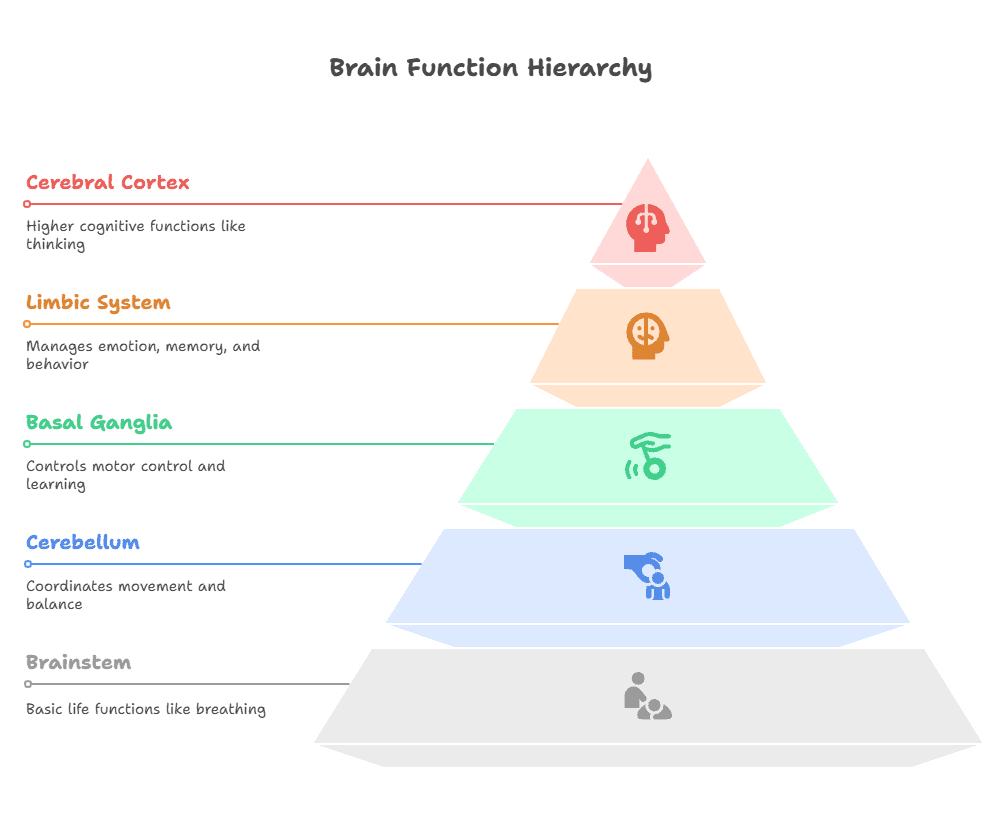The human brain is a complex and fascinating organ that controls everything we do, from breathing and moving to thinking and feeling. Within the brain, there are different regions that have specific functions that contribute to our overall cognitive and physical abilities. Understanding these brain regions and their functions is crucial in grasping the complexities of the nervous system.
Cerebral Cortex
The cerebral cortex is the outer layer of the brain that is responsible for higher-level thinking, decision-making, and sensory processing. It is divided into four main lobes: frontal, parietal, temporal, and occipital. Each lobe plays a unique role in processing information and controlling different functions.
Limbic System
The limbic system is a group of structures deep within the brain that is involved in emotion, memory, and motivation. It includes the amygdala, hippocampus, and hypothalamus, among other regions. The limbic system plays a crucial role in our ability to experience and regulate emotions.
Brainstem
The brainstem is the oldest part of the brain and is responsible for basic functions such as breathing, heart rate, and sleep. It also serves as a bridge between the spinal cord and the higher brain regions, allowing for communication between the two.
Cerebellum
The cerebellum is located at the back of the brain and is involved in coordinating movement, balance, and posture. It plays a crucial role in motor control and learning new motor skills.
Summary
In this introduction, we have explored some of the key brain regions and their functions. The cerebral cortex is responsible for higher-level thinking, the limbic system is involved in emotion and memory, the brainstem controls basic functions, and the cerebellum coordinates movement. Understanding the roles of these brain regions is essential in comprehending the complexities of the nervous system and how it influences our behavior and cognition.
Key Takeaways:
- The brain is made up of different regions, each responsible for specific functions.
- The cerebral cortex is the outer layer of the brain responsible for higher brain functions such as thinking, planning, and decision-making.
- The cerebellum is responsible for coordination, balance, and motor control.
- The brainstem controls basic functions such as breathing, heart rate, and sleep.
- The limbic system is involved in emotions, memory, and motivation.
- Damage to specific brain regions can result in specific deficits in function.
- Neuroplasticity refers to the brain’s ability to reorganize and adapt after injury or disease.
- Understanding the different brain regions and their functions can help in diagnosing and treating neurological disorders.
Key Terms:
- Brain Regions: Different areas of the brain that have specific functions and responsibilities.
- Cerebral Cortex: The outer layer of the brain responsible for higher-level cognitive functions such as thinking, planning, and problem-solving.
- Limbic System: A group of structures in the brain involved in emotion, memory, and behavior.
- Hippocampus: A region in the limbic system responsible for forming new memories.
- Amygdala: A region in the limbic system responsible for processing emotions, especially fear and aggression.
- Basal Ganglia: A group of structures in the brain involved in voluntary motor control and procedural learning.
- Cerebellum: A region at the back of the brain responsible for coordinating movement and balance.
- Brainstem: The oldest part of the brain responsible for basic life functions such as breathing and heart rate.
- Thalamus: A structure in the brain that acts as a relay station for sensory information.
